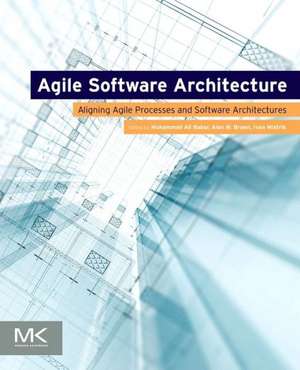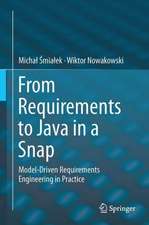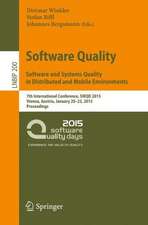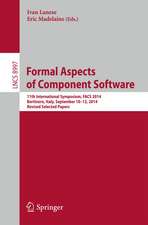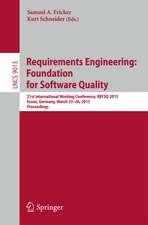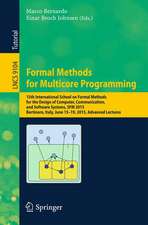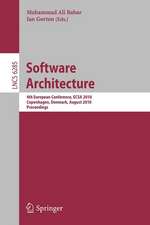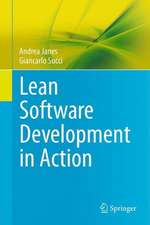Agile Software Architecture: Aligning Agile Processes and Software Architectures
Editat de Muhammad Ali Babar, Alan W. Brown, Ivan Mistriken Limba Engleză Paperback – 5 dec 2013
Agile Software Architecture focuses on gaps in the requirements of applying architecture-centric approaches and principles of agile software development and demystifies the agile architecture paradox. Readers will learn how agile and architectural cultures can co-exist and support each other according to the context. Moreover, this book will also provide useful leads for future research in architecture and agile to bridge such gaps by developing appropriate approaches that incorporate architecturally sound practices in agile methods.
- Presents a consolidated view of the state-of-art and state-of-practice as well as the newest research findings
- Identifies gaps in the requirements of applying architecture-centric approaches and principles of agile software development and demystifies the agile architecture paradox
- Explains whether or not and how agile and architectural cultures can co-exist and support each other depending upon the context
- Provides useful leads for future research in both architecture and agile to bridge such gaps by developing appropriate approaches, which incorporate architecturally sound practices in agile methods
Preț: 459.97 lei
Preț vechi: 679.31 lei
-32% Nou
Puncte Express: 690
Preț estimativ în valută:
88.01€ • 91.89$ • 72.84£
88.01€ • 91.89$ • 72.84£
Carte tipărită la comandă
Livrare economică 28 martie-11 aprilie
Preluare comenzi: 021 569.72.76
Specificații
ISBN-13: 9780124077720
ISBN-10: 0124077722
Pagini: 432
Ilustrații: black & white illustrations
Dimensiuni: 191 x 235 x 22 mm
Greutate: 0.74 kg
Editura: ELSEVIER SCIENCE
Locul publicării:Amsterdam, Netherlands
ISBN-10: 0124077722
Pagini: 432
Ilustrații: black & white illustrations
Dimensiuni: 191 x 235 x 22 mm
Greutate: 0.74 kg
Editura: ELSEVIER SCIENCE
Locul publicării:Amsterdam, Netherlands
Public țintă
researchers, practitioners, and graduate students of software engineering and software architectures, people working in architecturally sensitive industries (e.g. safety critical systems) and industries migrating to agileCuprins
Chapter 1: Introduction to ASAPart I: Fundamentals of Agile ArchitectingASA: The State-of-the-Art
ASA: Industrial/commercial perspective
ASA: Current Challenges and Future Directions
Chapter 2: The DCI Paradigm: Beyond Class-Oriented Architecture to Object OrientationPart II: Managing Software Architecture in Agile Projects
Chapter 3: Refactoring software architecture
Chapter 4: Architecture Decisions: Who, How and When?
Chapter 5: Combining agile development and variability handling to achieve adaptable software architecturesPart III: Agile Architecting in Specific Domains
Chapter 6: Agile software architecture knowledge management
Chapter 7: Continuous software architecture analysis
Chapter 8: Bridging user stories and software architectures: a guidance support for agile architecting
Chapter 9: Architecture-centric testing for security: An agile perspectivePart IV: Industrial Viewpoints on Agile Architecting
Chapter 10: Multi-tenancy multi-target architectures: Extending multi-tenancy architectures for agile deployment and development
Chapter 11: Bursting the Agile Bubble Anti-Pattern
Chapter 12: Building a Platform for Innovation: Architecture and Agile as Key Enablers
Chapter 13: Opportunities, threats and limitations of emergent architecture
Chapter 14: Aviva GI: Architecture as a Key Driver for Agile Success
Recenzii
"Project managers, product owners, and software architects will benefit from reading this book. They will be able to check what is the state of the art and how to apply specific techniques to their own projects given different dimensions, domains, and scopes. " --ComputingReviews.com, August 6 2014
